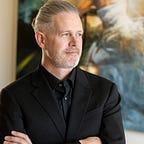off the shelf: The Ambivalence of the Sacred
brief reflections on books I haven’t read in a while
Judging by the number of underlining, circling, and notes throughout my copy of the book, Appleby’s study of religious-motivated violence made a big impact on my thinking during grad school. Appleby grapples with the phenomenon of religious violence by considering in multiple contexts, “why and under what conditions do some religious actors choose the path of violence while others seek justice through nonviolent means and work for reconciliation among combatants?” Appleby identifies and seeks to understand “religious militants” at both ends of the spectrum of violence: those whose militance is in the service of peacebuilding, and those whose militance veers toward extremist violence. Overall, he concludes that historical evidence demonstrates that we can expect religious groups to collaborate on establishing a “workable peace” and to mitigate or even eliminate the circumstances that enable extremist violence, but, along the way, three ideas stuck with me.
First, Appleby doesn’t classify religion as separate and distinct from other categories of human behavior. Instead, he writes, “…religion constitutes an integral culture, capable of forming personal and social identity and influencing subsequent experience and behavior in profound ways.” Taking the phenomenon of religious violence seriously forced me to deny the exceptionalism typically reserved for all things religious — I couldn’t excuse religion, but I also started to see religious ritual and practice as vehicles for social change. Religious and cultural rituals can, as Appleby demonstrated, facilitate transformation toward peacebuilding…but that depends on the choices of the religious actors designing and leading those experiences. No ritual, I came to understand, could be neutral in this light. Do religious actors want to create a world characterized by peace and justice, or are they using the cover of religious language to maintain or implement unjust structures?
Second, Appleby offered me a more nuanced understanding of the relationship between religion and culture than I held before, and it reinforced the value and relevance of social construction theory. Like other categories of human social behavior, religion carries its essential components from generation to generation, but each generation makes choices to maintain, alter, or reject what’s inherited. “In the gap between experience and interpretation,” Appleby wrote, “religious nationalists and fundamentalists find their opening. They come with cosmologies, doctrines, ideologies, and moral imperatives — all hallowed by their purportedly ancient origins. Sacred sites are alleged to transcend history, but it is also clear that over the course of history these sites are ‘invented’ and ‘constructed’ by religious elites and competing religious movements.” This made me sensitive to both the authority of the components of religion to practitioners, heightened my awareness of the power of personal agency, and refined my skepticism for traditionalism and formalization, two characteristics associated with ritual that are frequently manipulated for other purposes.
Finally, The Ambivalence of the Sacred, enabled me to see the role of religion in global politics more clearly. Published in 2000, the book identifies a “new fractious geopolitical situation” that “lends a particular urgency to the familiar plea for long-term strategies for fostering and sustaining a workable peace in these societies.” At one level, this little nugget now stands as an unheeded warning. 9/11 constituted perhaps the pinnacle of religious violence in the Modern age, and Appleby and others in academia (and countless others in other fields and industries) waved this flag throughout the final decades of the twentieth century, and, in retrospect, the global community now suffers the consequences of not hearing and responding to these warnings. Thinking of Appleby’s study, part of the failure is rooted in a lack of clarity about the goal. True peace and justice may be too far off to imagine, but, Appleby argues, a “workable peace” is possible.
A workable peace is not the absence of conflict but the condition of structural civility that obtains when a society has developed culturally appropriate and effective ways of adjudicating and resolving conflict nonviolently. Sustainable peace…requires that long-time antagonists not merely lay down their arms but that they work toward genuine reconciliation — socially defined relationships that thrive by means of a society-wide network of relationships and mechanisms that promote justice and address the root causes of enmity before they can regenerate destabilizing tensions.
